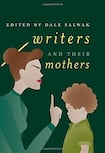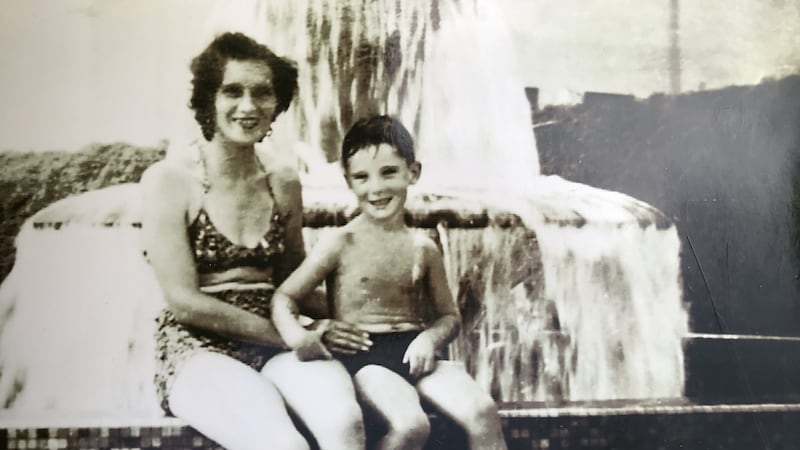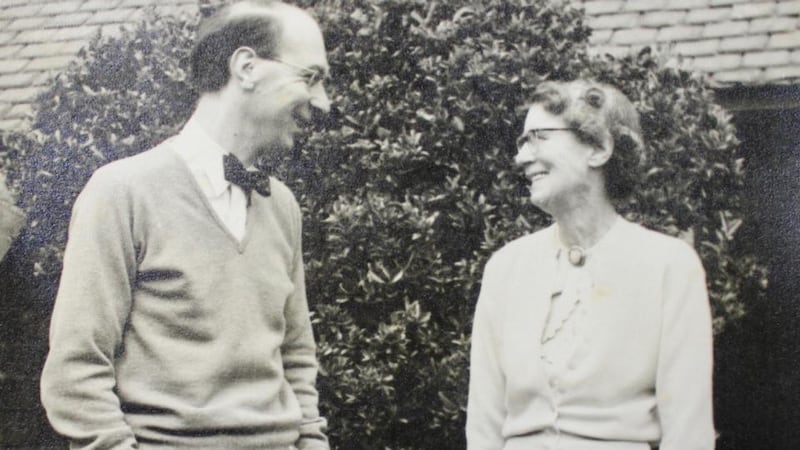
When Philip Larkin was asked if he might regret not being able to attach more significance to his childhood, the interviewer highlighting that there was no trauma – no villainous mother – that had led to his becoming a poet, he replied simply “Well, it would have been nice to have more technicolour, so to speak.”
Classically understated though Larkin’s response was, it remains true that writers and readers continue to obsess over what it is that nurtures the impulse to write. We pore over photographs of writers in their studies as much, if not more, than we do the early chapters of literary biographies, hinting at our confusion as to whether such an impulse is activated in childhood, or only in the presence of a carefully curated bookshelf. We’re convinced that there’s a commonality among the chaos – a few distillable moments or influences that make a writer.
In his collation of 22 essays around the theme of writers and their mothers, editor Dale Salwak indicates that a mother, whether present, or noticeable in her absence, might be as formative an influence on a writer’s work, as in life.


It's not surprising that a mother might occupy a pervasive space in their child's work, but what is most striking about the collection is its lack of predecessors. Colm Tóibín's New Ways to Kill Your Mother contains pieces that would not be out of place here, despite being an anthology that chooses to focus on the broader importance of a writer's family. There's no doubt however, that its title hints at which of these forces Tóibín felt most important, his own mother's literary ambitions certainly a critical influence on his craft.
Surprised to realise there was so little written about the subject, Writers and Their Mothers is Salwak's response to Alexander McCall Smith's assertion that "there may be no book on the mothers of poets, or artists in general, but it might one day be written and would be, I think, an enlightening read".
Each of the mothers demand a very different response – whether worshipped or vilified; treated as lifetime confidantes, or rarely trusted
Containing both biographical and autobiographical pieces, Salwak delivers a series of snapshots into the lives of 22 very different women and their relationships with their auspicious children.
From a scarce portrait of Mary Arden Shakespeare, whose presence in her son’s life is very much felt within his works, to the formidable Charlotte Lowell, whose tyranny fuels her son’s poetry; each of the mothers demand a very different response – whether worshipped or vilified; treated as lifetime confidantes, or rarely trusted. Naturally, the children often seem to live out the unlived lives of their mothers, whether or not that includes asserting a literary ambition. Yet whilst the relationships themselves differ immensely, it is noticeable that none of them seem entirely distinct, or wholly irrelevant to, the bodies of work that would surface down the line.
Ian McEwan addresses this somewhat opaque trajectory in his assessment of his inherited “mother tongue”. The young McEwan waged a cultural rebellion on his dialect, asking his peers to correct him when he slipped into using his mother’s prose. When settling down to write, McEwan found his clipped prose mistaken for searing perfectionism, but this was a mere byproduct of his own unease with using literary English so unlike the idiom of his mother.
His essay delicately underscores the cyclical nature of this journey, as McEwan comes to cherish that which he once cast off, saving tit-bits of his mother’s speech for his characters. More significantly, McEwan looks to his female characters to embody the goodness of which his male characters fall short, which he puts down to a long time spent defending his mother to his father “. . . In other words, pen in hand, I was going to set my mother free.”
What starts as a light-hearted commentary on the writer’s use of language becomes a space in which McEwan can assess a theme central to his work – his mother’s influence serving as the entry point into this revelatory mode of self-appraisal.
Anthony Thwaite, by contrast, chooses to supplant his essay with six poems written towards the end of his mother’s life. Through poetry, he is able echo the quiet distress of visiting an elderly relative, in a way that a long form essay might not have captured:
Being with her now is a kind of boredom,
A dullness in which guilt and pain both ache,
When all my childhood anguish after freedom
Has long since vanished. Now I wait to take
Her back to her own loneliness, where she
Can follow boredom of a different kind,
Routine quite unresented, and set free
From all constraints. She is resigned . . .
This docile image is shattered in a later poem, when Thwaite discovers a scrap of paper on which his mother asks in a “deadened, endless shout” . . . “Why have you done this to me? Take me out.” The couplets ring out accusingly, further stressing the unhealed wounds that lie at the heart of his contribution.
Martin Amis pens a witty homage to a wonderfully "wicked" stepmother
In style alone, Thwaite’s piece lies almost at odds with the more traditional essays included in the collection, but there is much of value here too. An examination of Eva Larkin’s influence on her son’s style, makes for an almost soothing read, revealing as it does, that Philip Larkin was at the very least capable of true and lasting affection. A formidable May Beckett, both a creative and destructive presence in her son’s life, offers a clue into his darkness, while Martin Amis pens a witty homage to a wonderfully “wicked” stepmother, allowing her just a few moments in the spotlight before the inevitable thud of his father’s wit approaches. Perhaps most notably, a piece offered by William Golding’s daughter concludes so beautifully that a reader might be convinced they were reading fiction.
In each case, these women are shown to be different to one another, whether in strength or foible, all wielding a unique influence over their children, and en masse, this makes for a compelling, and varied read.
In his collection, Salwak simply asserts that good writing is likely to flourish because of, or in spite of, a mother’s influence. In considering how far such an arc of influence might stretch, the enduring strength of these essays, however, lies in their endeavour to elevate these women – these mothers – from the footnotes.









